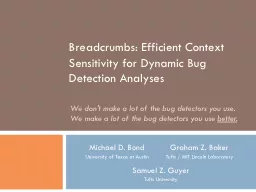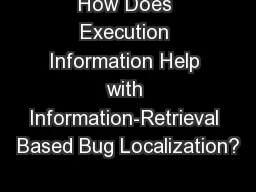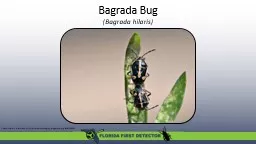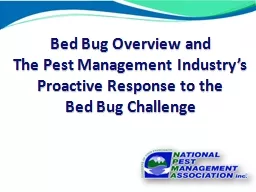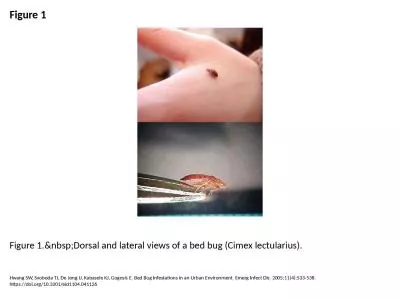PPT-Breadcrumbs: Efficient Context Sensitivity for Dynamic Bug
Author : briana-ranney | Published Date : 2016-02-24
Michael D Bond University of Texas at Austin Graham Z Baker Tufts MIT Lincoln Laboratory We dont make a lot of the bug detectors you use We make a lot of the
Presentation Embed Code
Download Presentation
Download Presentation The PPT/PDF document "Breadcrumbs: Efficient Context Sensitivi..." is the property of its rightful owner. Permission is granted to download and print the materials on this website for personal, non-commercial use only, and to display it on your personal computer provided you do not modify the materials and that you retain all copyright notices contained in the materials. By downloading content from our website, you accept the terms of this agreement.
Breadcrumbs: Efficient Context Sensitivity for Dynamic Bug: Transcript
Download Rules Of Document
"Breadcrumbs: Efficient Context Sensitivity for Dynamic Bug"The content belongs to its owner. You may download and print it for personal use, without modification, and keep all copyright notices. By downloading, you agree to these terms.
Related Documents

